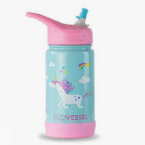Introduction: The circular economy offers a transformative approach to dealing with the environmental challenges posed by plastic water bottles. In this blog, we’ll delve into the principles of the circular economy, how it applies to plastic water bottles, and its potential to revolutionize the way we produce, use, and dispose of single-use plastics.
- From Linear to Circular: The Shift in Paradigm: The linear economy’s “take, make, dispose” model perpetuates the waste generation of plastic water bottles, while the circular economy seeks to minimize waste and maximize resource efficiency through recycling and reuse.
- Design for Durability and Recyclability: Adopting the circular economy approach involves designing plastic water bottles for durability and recyclability, ensuring they can be effectively reused or repurposed after their initial use.
- Closing the Loop: Recycling Initiatives: Implementing effective recycling initiatives is crucial to the circular economy’s success, transforming used plastic water bottles into new products and minimizing the demand for virgin materials.
- Extended Producer Responsibility (EPR): By holding producers responsible for their products’ end-of-life management, EPR programs promote sustainable practices and encourage more responsible production and waste management.
- Collaboration for a Sustainable Future: The circular economy approach requires collaboration among stakeholders, including producers, consumers, and policymakers, to create a closed-loop system that minimizes waste and promotes sustainability.
Conclusion: Embracing the circular economy approach presents a transformative solution to the challenges of plastic water bottles and single-use plastics. By transitioning from a linear to a circular model, we can reduce plastic pollution, conserve resources, and create a more sustainable and environmentally responsible future.

















